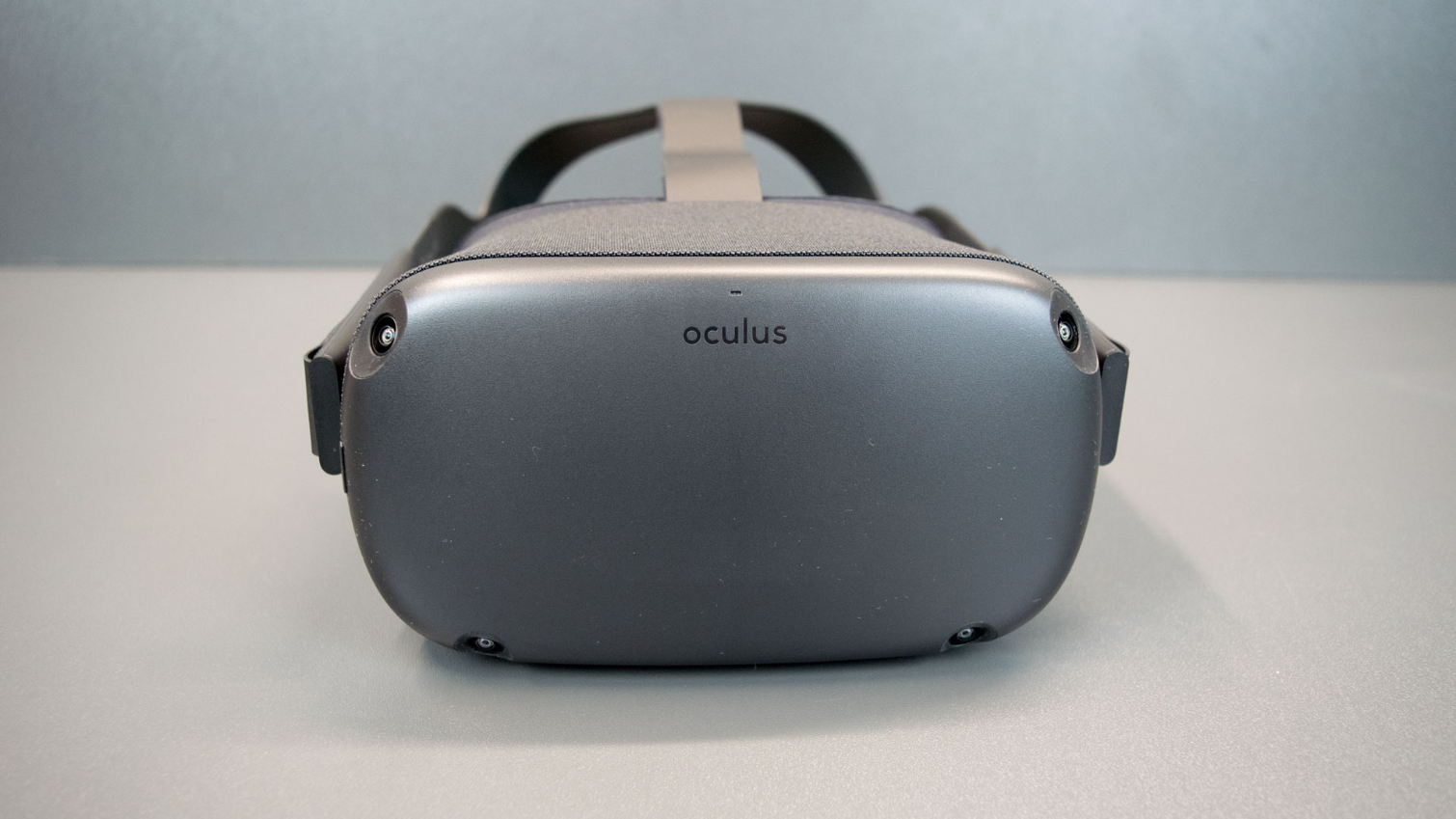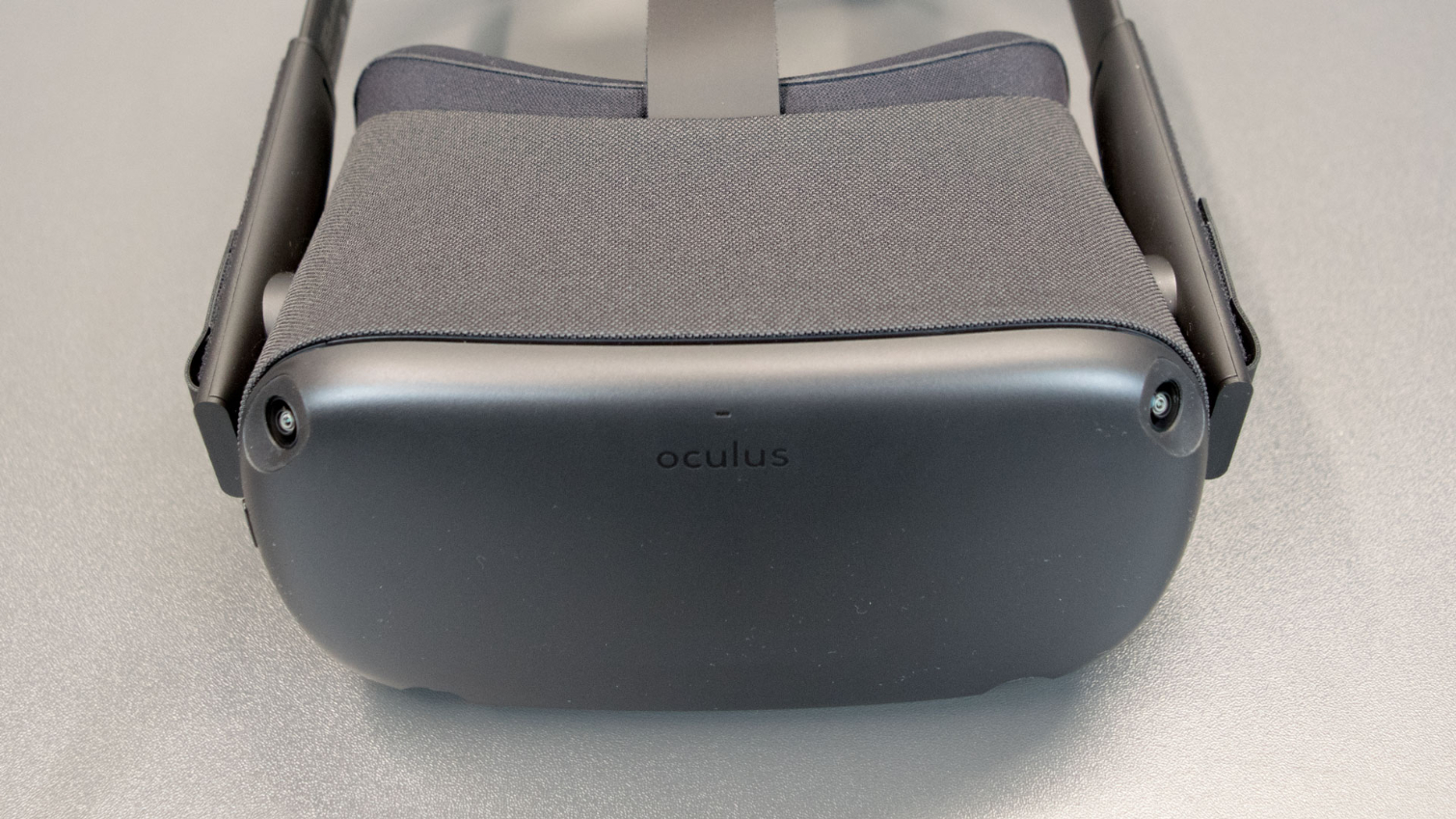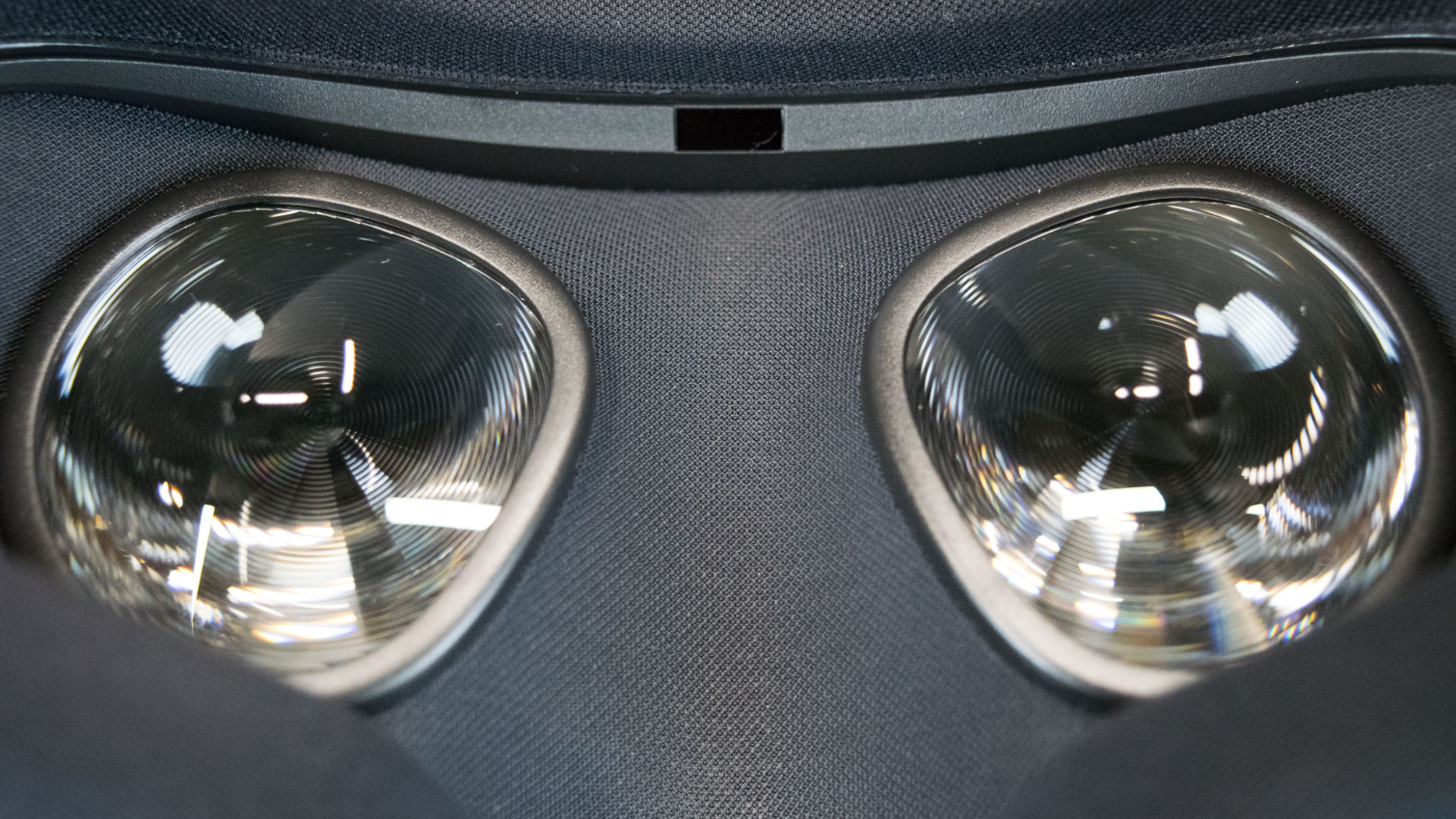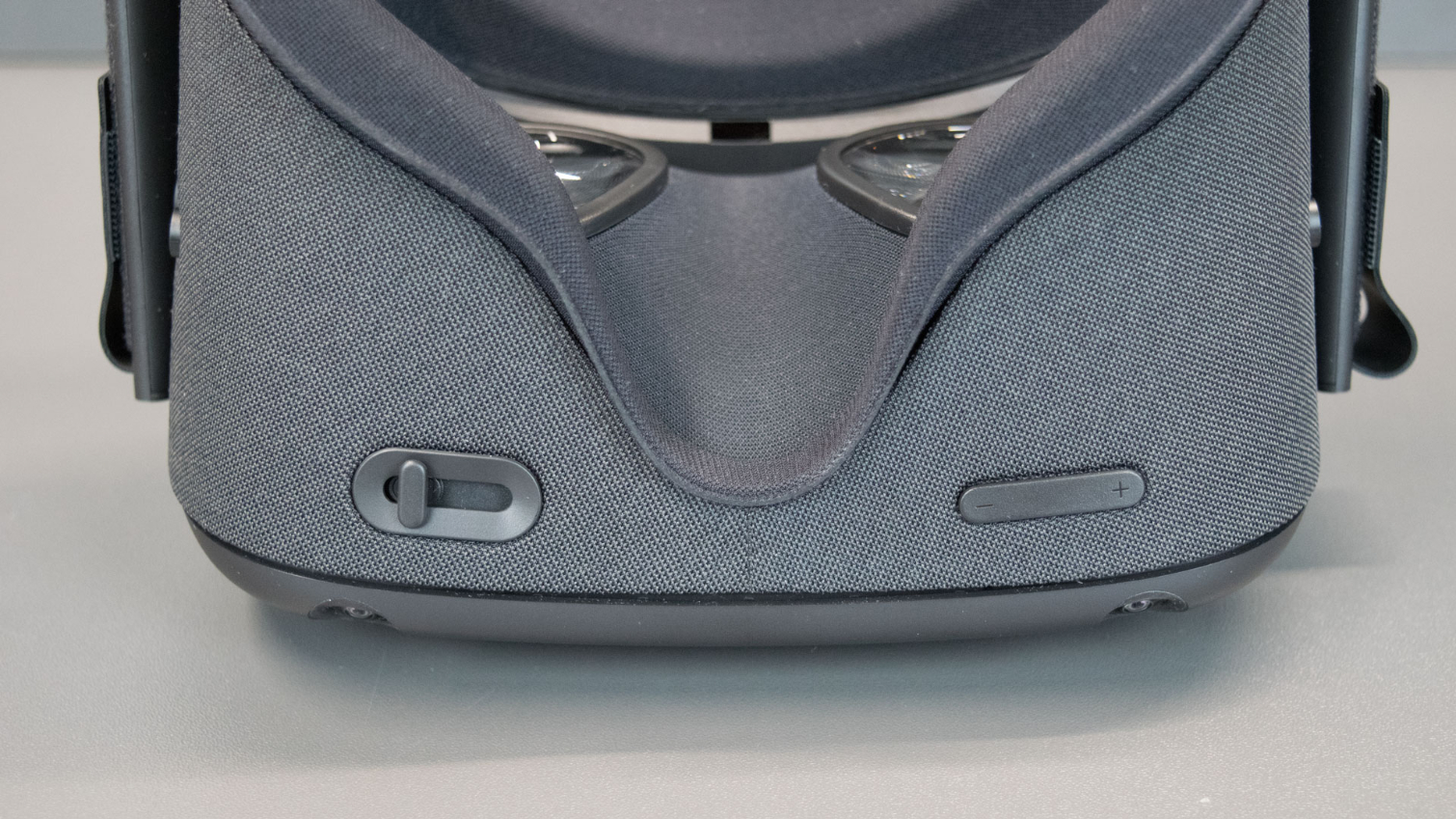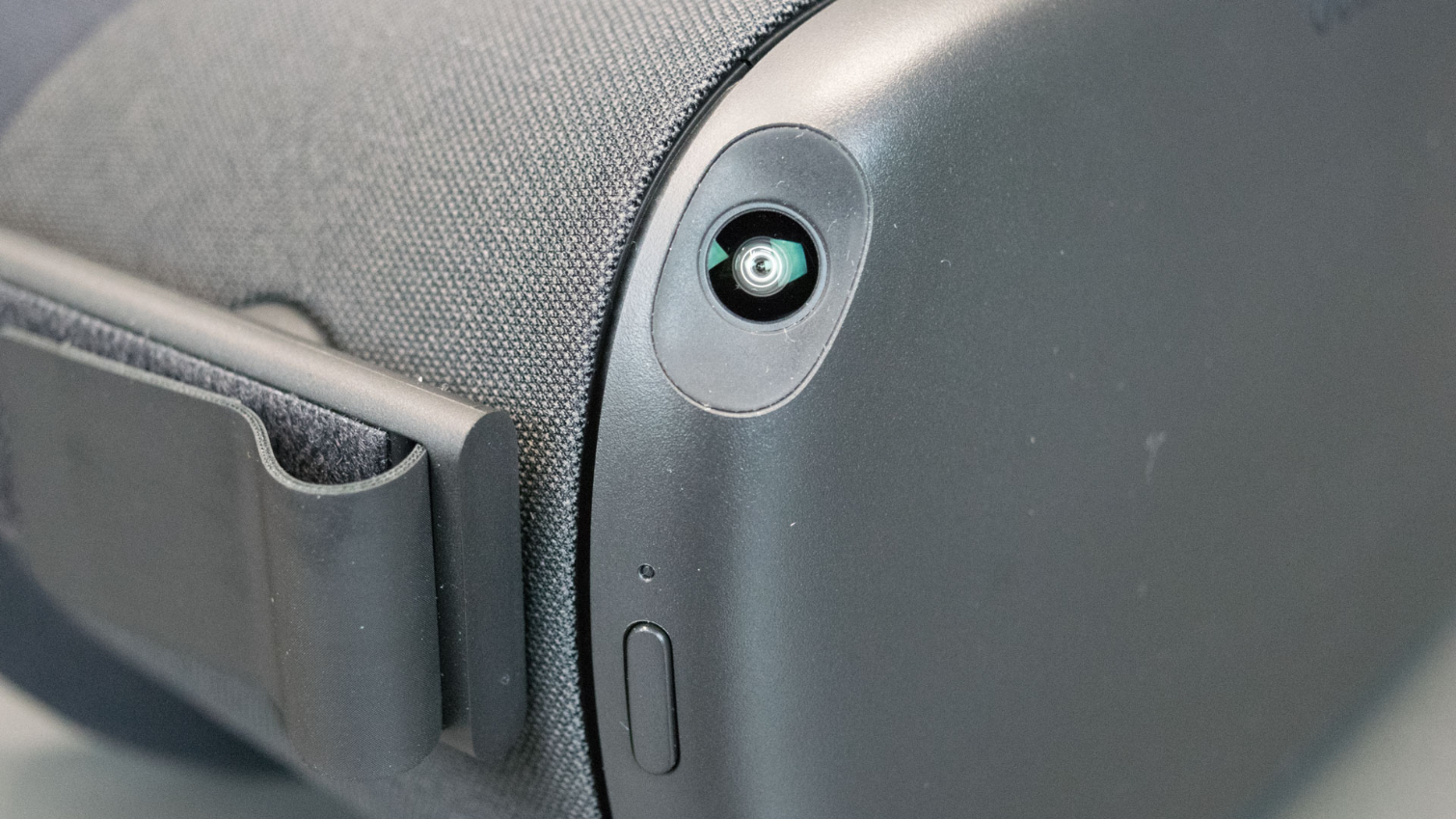Tom's Hardware Verdict
The Oculus Quest is everything most people need in a VR system. It’s easy to configure and convenient to set up and tote around. The experiences it offers are every bit as immersive as a PC-connected room-scale VR system.
Pros
- +
Reasonable price
- +
Easy to configure
- +
No wires
- +
No need for a computer
- +
Good-looking design
Cons
- -
A step back in VR graphics quality
- -
Requires a smartphone for initial setup
- -
Restricted to Oculus Store content
Why you can trust Tom's Hardware
Oculus Quest Review
The Oculus Quest could be the device that turns the VR market around and attracts the masses. It’s easy to use, simple to setup, performs well and is reasonably priced. It’s basically a game console built into a headset, and it’s much better than what you’re probably expecting.
Oculus revealed the Quest, a $399 standalone 6-degrees of freedom VR headset, last fall at Oculus Connect 5. After several years of anticipation, it appeared that what Oculus was cooking up would have a significant impact on the VR industry. And now that I've spent a week with Quest, I can firmly say this release marks a pivotal moment in the history of the VR industry. Quest is going to change the game.
Oculus is taking pre-orders for the Quest now, with shipping taking place on May 21. If the Quest doesn’t jump-start VR adoption, we may be forced to give the VR doomsayers a bit more credit. This headset checks all the right boxes and leaves very few desirable features off the table. If this can't get the market to the billion VR users that Facebook’s founder Mark Zuckerberg envisioned when he spent $2 billion to purchase the Oculus brand, I don't know if anything can.
Oculus Quest VR Headset Specs
| SoC | Qualcomm Snapdragon 835 |
| Display | Dual 1440x1600 72Hz OLED panels |
| IPD Setting | Mechanical IPD adjustment (range undisclosed) |
| Storage | 64GB or 128GB of internal flash storage |
| Audio | Integrated speakers and microphone, dual 3.5 mm audio jack (one on each side), in-ear headphone accessory available |
| RAM | 4GB |
| Battery | Built-in Lithium Ion battery (mAh undisclosed) |
| Facial Interface and Strap Material | Knit Mesh, Nylon Micro Yarn, Spandex Materials |
| Tracking Technology | Oculus Insight inside-out camera-based 6-DoF tracking with motion controllers |
| Input | 2nd-generation Oculus Touch controllers |
| Play Space Requirements | Stationary or Room-scale. Room-scale requires a minimum of 2 x 2m or 6.5 x 6.5 feet of obstruction-free floor space |
| Dimensions | 193 x 105 x 222mm |
| Weight | 571g |
| Price | 64GB: $399, 128GB: $499 |
A Long Time Coming
Oculus has been building towards a standalone, un-tethered VR solution for a long time. The company first revealed Project Santa Cruz in October 2016 at Oculus Connect 3. Santa Cruz was a prototype concept of a Rift with a PC built onto the back. In October 2017 at Oculus Connect 4, Oculus gave us a glimpse of a near-production-ready version of Project Santa Cruz, which would eventually evolve into Quest.
Quest isn’t Oculus’s first attempt at a standalone VR headset. Last year, the company released the Oculus Go. The headset supports basic 3-degrees of freedom (DoF) tracking. It superseded the Gear VR platform but didn’t raise the bar for VR devices very high. As an entry-level device meant to introduce people to VR, Oculus Go does a great job. But its limited tracking function ultimately cripples its capacity to deliver the full experience that the PC-connected Oculus Rift offers.
The Quest bridges the gap between the Go and the Rift and offers full room-scale (or warehouse-scale) 6-DoF movement in a tether-free, standalone package.
Powered By Snapdragon--Circa 2017
Oculus Quest gets its processing power from a Snapdragon 835 SoC, which would have been cutting-edge when Oculus started working with the platform in 2016. But it’s a surprising move for Q2 2019, when there are far more powerful chips in Qualcomm’s catalog. Still, developers have managed to squeeze impressive performance out of the mature mobile chipset (more on that later).
Get Tom's Hardware's best news and in-depth reviews, straight to your inbox.
All-Star Feature List, Top-Notch Fit and Finish
The Oculus Quest might be the best-looking VR headset that I’ve ever laid hands on. It looks and feels like a high-quality product and something you would want to own. All the materials are well-refined, and the fit and finish are fantastic. It’s clear Oculus has learned a thing or two about headset design over the years. The new device improves on the looks of both the Rift and Go.
Like the Rift, the Quest features a fabric-wrapped exterior, which gives it an elegant look (at least when it’s new). The Rift introduced the fabric exterior for allowing infrared light to pass through it, but the Quest does not use infrared lights or external sensors for its tracking system, so the fabric here is for aesthetic purposes. However, it may facilitate heat dissipation for all the internal components. While the Go has a metal faceplate that acts as a heatsink to keep the parts chilled, the Quest has a plastic faceplate with no visible ventilation holes.
The Quest also has the best features of the Go headset, including the head strap-based speaker system and the removable / washable memory foam face cushion.
Superior Visuals
The Oculus Quest headset runs off a less-powerful computing platform than the Rift, but that didn’t stop Oculus from improving display hardware in the new headset. The Oculus Quest features dual 1440x1600 displays, which is a significant improvement over the Rift’s 1080x1200 per-eye resolution.
To compensate for the lower computing power and higher resolution, Oculus opted for a lower refresh rate to lower the performance requirements.
The Rift features 90Hz displays, and at launch, Oculus claimed that 90Hz was the minimum requirement to prevent motion sickness. Since then, the company has loosened its stance on that metric. The two panels in the Quest also refresh 72 times per second, as does the Go, and the upcoming Oculus Rift S is supposed will feature 80Hz.
Even still, the Quest headset demands a much higher pixel fill rate. To drive the Rift, your GPU must deliver 233,280,000 pixels per second, whereas the Quest’s Snapdragon SoC needs to contend with 331,776,000 pixels per second. It’s a miracle that this mobile chipset can handle that kind of workload, but it pulls it off with flying colors.
The Quest also includes a mechanical IPD adjustment system, which enables you to dial the lenses in to match the distance between your pupils. This is a notable feature because the Rift S will use software IPD adjustment, so the Quest has a leg up here.
Best of all, the Quest boasts the impressive Fresnel lenses that Oculus developed for the Go, which help to minimize the dreaded godray image distortion that plagues the 1st-generation Rift.
Insight Tracking System
In addition to driving the graphics, the Qualcomm processor must also simultaneously calculate the headset and controllers’ positions.
To break the headset free of the host computer, Oculus created the Insight tracking system for the Quest. It uses headset-based cameras to map the surrounding environment. The Quest uses four cameras with fish-eye lenses to keep track of movements. Two cameras are mounted on the upper corners facing outwards and slightly to the rear. The other two cameras are on the bottom edge, facing forward and down to keep track of the floor and lower half of the space.
This is quite different from the Rift's external sensor-based tracking solution called Constellation, which tracks infrared patterns on the headset with cameras that sit on your desk. The cameras demand a high level of USB bandwidth and sensors that you must wire to a computer.
New Touch Controllers
The Insight cameras are also used to monitor the movement of your Touch controllers. The new controllers include all the same buttons in more or less the same layout as the original Touch controllers. However, Oculus moved the halo with the tracking LEDs to the top of the controllers so the headset-based cameras can see them with less occlusion.
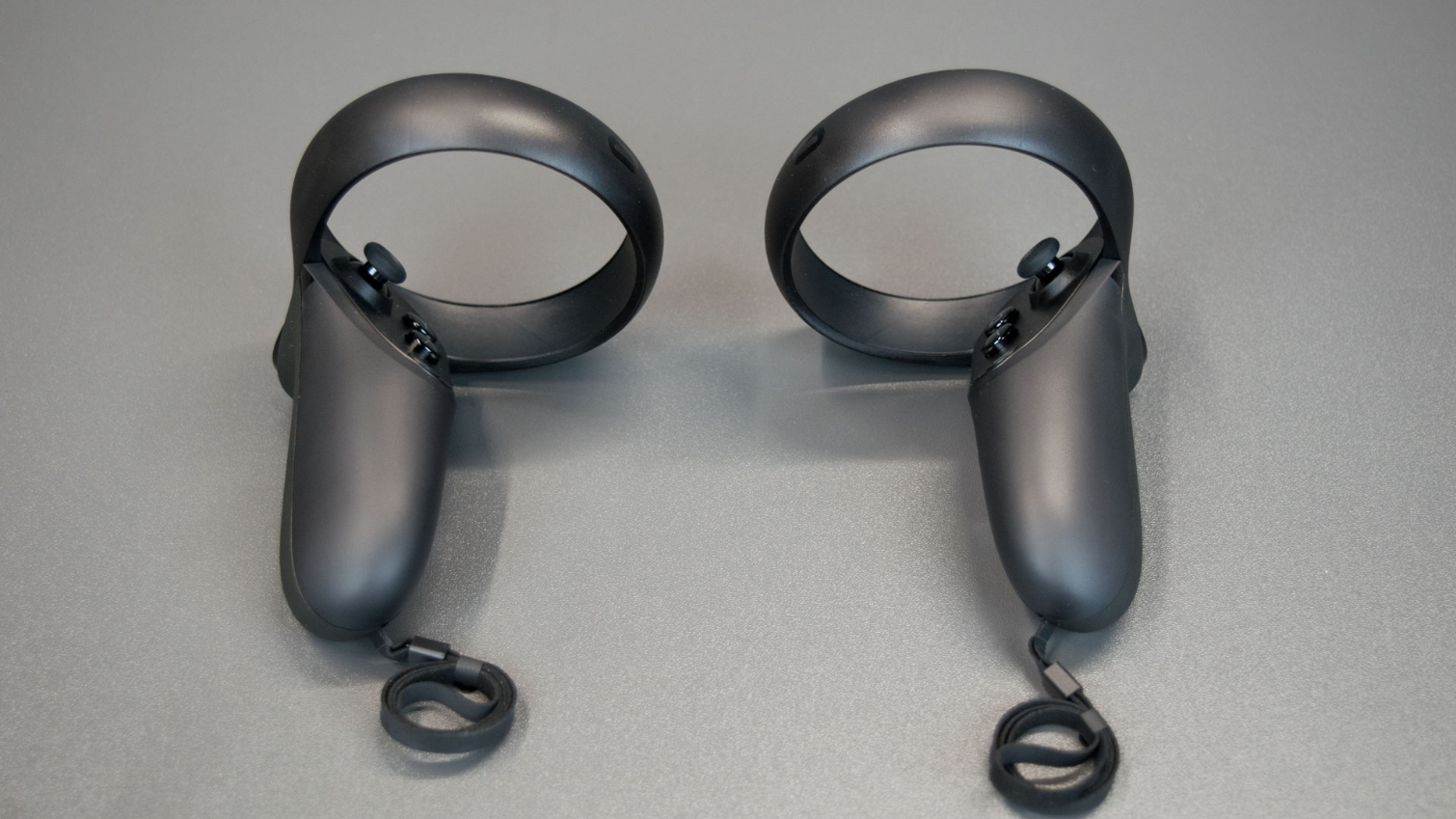
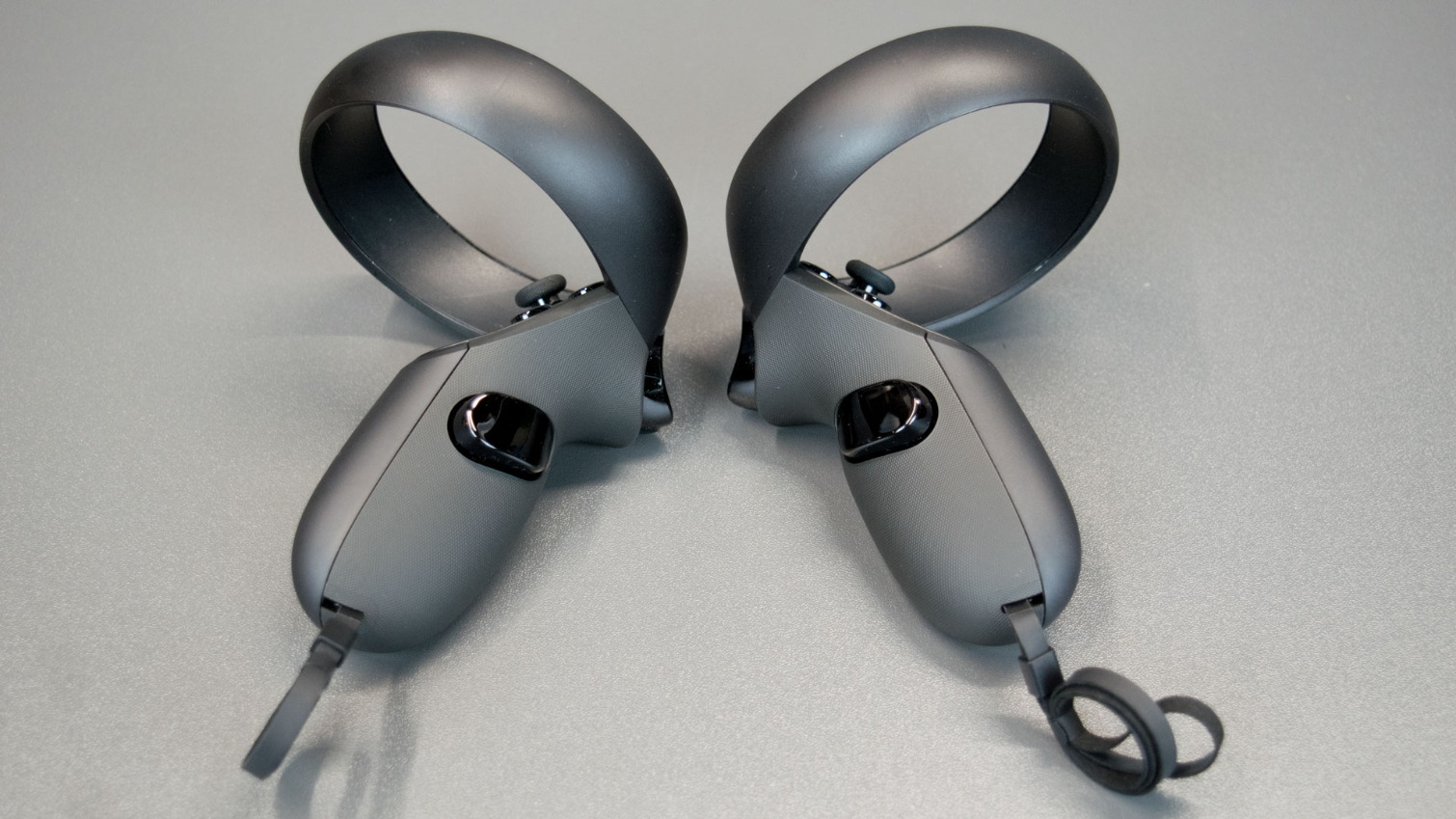
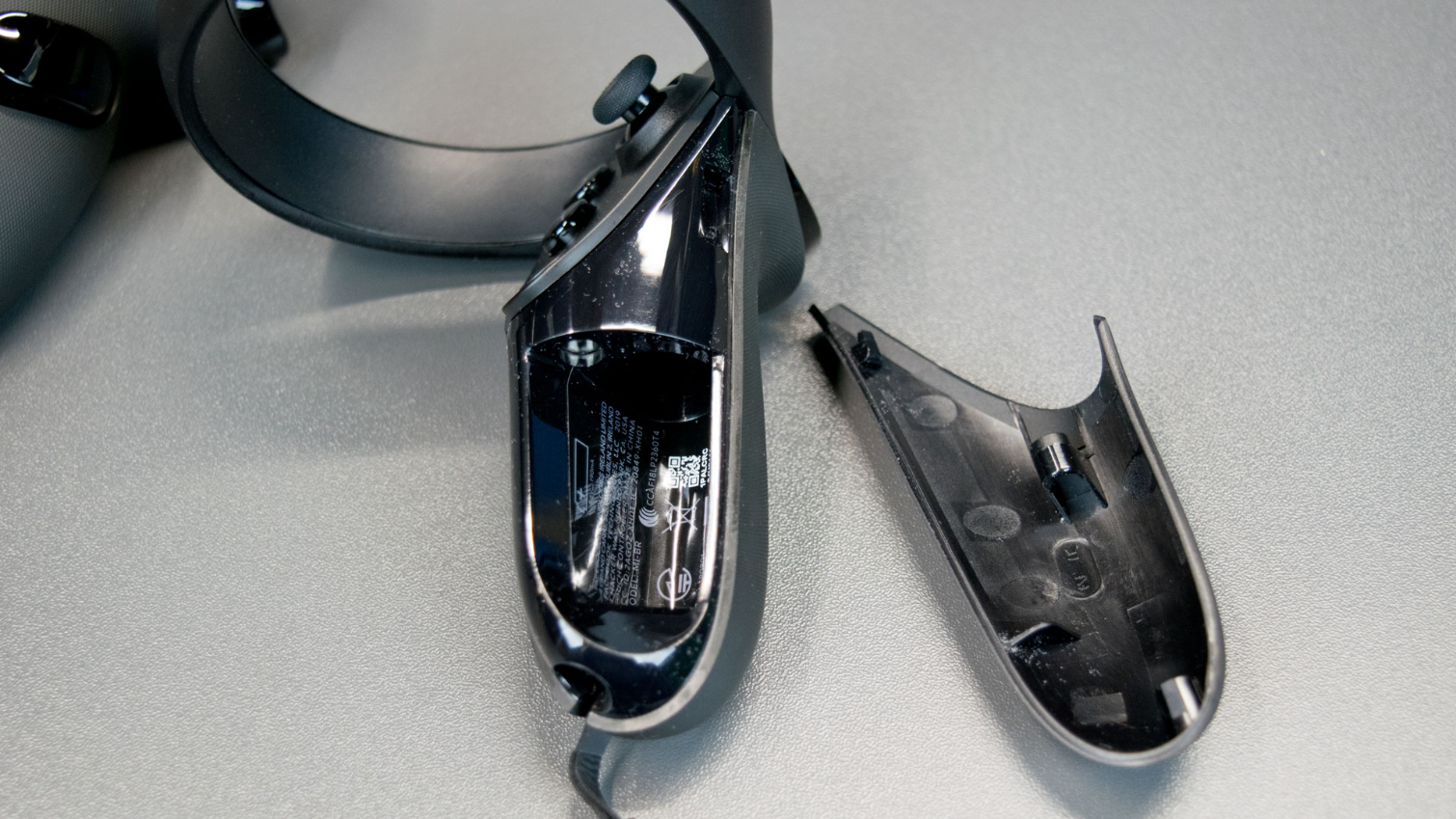
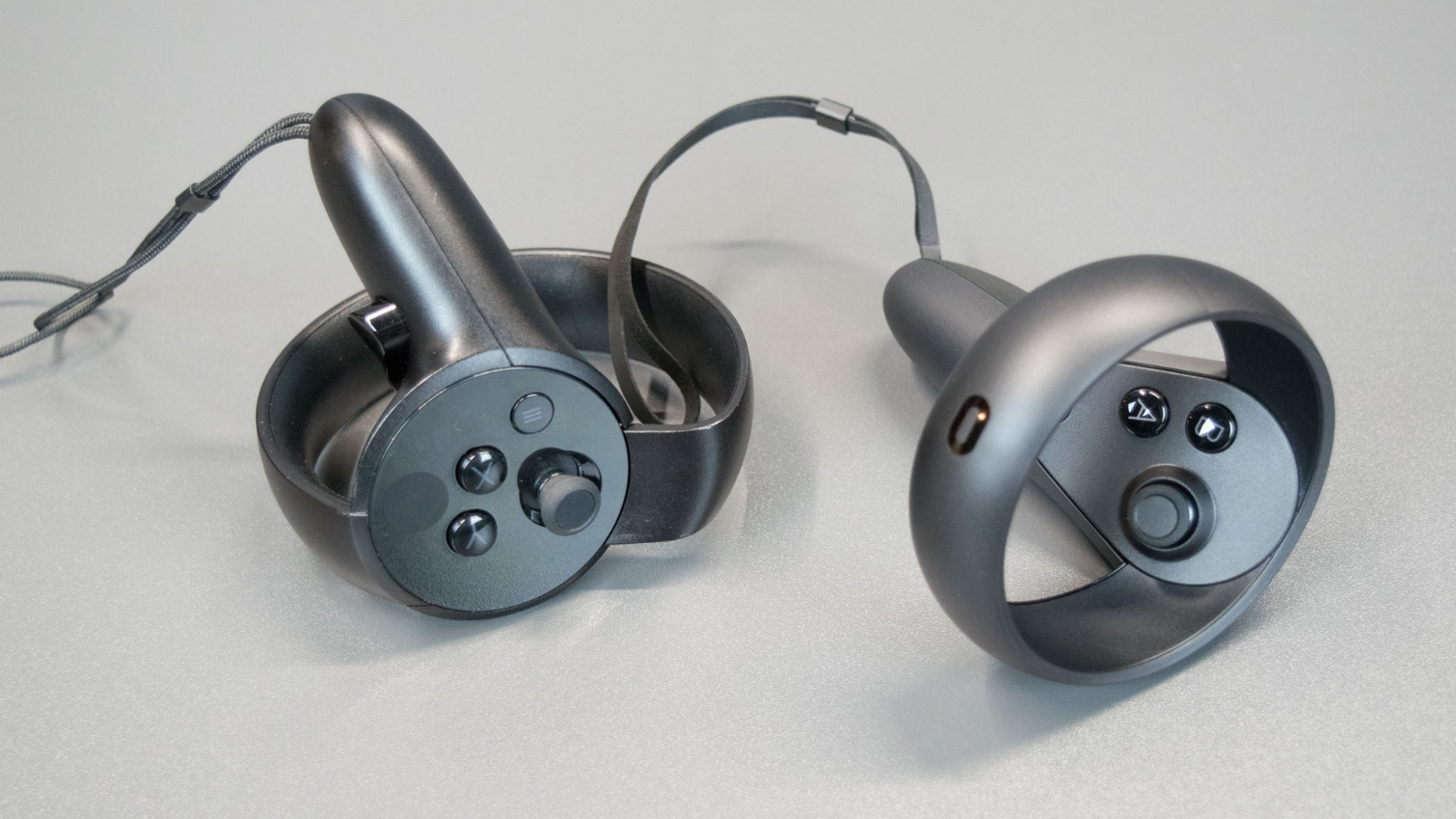
When the controllers are visible to the cameras, the tracking fidelity is as good as you get with the Rift. And when you reach beyond the view of the cameras, Oculus uses software and the gyro information to estimate your controllers' position. Unlike the Windows Mixed Reality controllers, which don’t track well outside of the camera range, the new Touch controllers work well beyond the camera’s field of view.
The new Touch controllers are quite a lot like the old controllers, but with improved ergonomics. The company made the handles slightly thicker, which is a change that I welcome. The original controllers were a bit too small, and my hands always cramp while using them. The new shape is much more comfortable for me.
MORE: Best Virtual Reality Headsets
MORE: All Virtual Reality Content
MORE: Virtual Reality Basics
Kevin Carbotte is a contributing writer for Tom's Hardware who primarily covers VR and AR hardware. He has been writing for us for more than four years.
-
jasonelmore So whats going to happen to the users who own the Oculus CV1? Will high-quality PC driven games still be supported and expanded upon?Reply -
dub273 I have some concerns about the display quality of the Quest. I currently own the Go, and I'm not a fan of the images it creates as compared with the Rift and the Gear VR. The colors aren't very vibrant, and the blacks are more like greys. I can handle the lower refresh rate, but I'd like to hear how visual fidelity is on the Quest versus the Go.Reply -
cryoburner Reply
Oculus will be launching an updated Rift at the same time as this, and other companies like Valve will soon be releasing new PC-connected headsets as well, so I don't see PC driven VR going away anytime soon.jasonelmore said:So whats going to happen to the users who own the Oculus CV1? Will high-quality PC driven games still be supported and expanded upon?
Unlike the Go which uses an LCD panel, the Quest uses OLED panels, so it should likely offer better contrast with deeper blacks.dub273 said:I have some concerns about the display quality of the Quest. I currently own the Go, and I'm not a fan of the images it creates as compared with the Rift and the Gear VR. The colors aren't very vibrant, and the blacks are more like greys. I can handle the lower refresh rate, but I'd like to hear how visual fidelity is on the Quest versus the Go.
However, these are the kinds of things that should have been covered in the review. This article felt more like a first-impressions piece than anything. If the writer has a pile of VR headsets next to him, why not provide some more detailed comparisons to those headsets? How does the sharpness and clarity compare? Or the field of view? What about the weight distribution? Audio quality? Is there anything that justifies paying an extra $100 for the version that includes $10 worth of additional storage? And is there no other way to expand storage, like a MicroSD slot? The review felt rather light on details.
In any case, while this device might be a big improvement over the Oculus Go (albeit at double the price), this kind of headset doesn't really impress me much. Being a "standalone" device (still apparently requiring a smartphone to manage content) the Quest is ultimately going to be limited to the hardware that it ships with. The visuals are already behind PC VR before it even launches, and will only fall further behind as time goes on and graphics hardware improves. Plus, it doesn't sound like the battery is easily replaceable, and has somewhat mediocre run-time to begin with, so what happens after a couple years when the battery's capacity has been reduced further due to wear? Much like smartphones, this headset seems designed to be disposable, so when they come out with a new one a couple years down the line, people will feel the need to upgrade. And also much like smartphones, you appear to be limited to a walled-garden app store for acquiring content. That's not exactly the kind of VR ecosystem I would like to see.
The Quest may be a decent option for someone who doesn't have gaming-capable hardware that can run a tethered headset, and it has some potential to become popular as a "vr console", though I suspect it won't provide the longevity of a typical console, and I don't see it selling like one either without a bunch of AAA games coming to the platform.
Edit: Road To VR has a much more thorough review, that goes into more detail about both the good, and not-so-good aspects of this headset. They seemed to have an overall positive view of the headset as well, but also made a point of noting its issues and compared it to other headsets...
https://www.roadtovr.com/oculus-quest-review-the-first-great-standalone-vr-headset/ -
bit_user Reply
It's good to see another review from you, mate!kcarbotte said:The Oculus Quest could be the device that turns the VR market around and attracts the masses. It’s basically a game console built into a headset, done right.
I won't repeat @cryoburner 's points, though the piece does give a great impression and addresses some important concerns. -
bit_user Reply
Well, VR is kinda like that (even more than current smartphones, I'd say). Even now, it'd be foolish to buy a VR HMD, assuming it won't be hopeless obsolete in 5 years. The typical VR upgrade cycle is still probably 2-3 years.cryoburner said:Much like smartphones, this headset seems designed to be disposable, so when they come out with a new one a couple years down the line, people will feel the need to upgrade.
Isn't that where the Rift started, and it was only through a hack that people enabled it to be used with Steam? I know the converse was true.cryoburner said:And also much like smartphones, you appear to be limited to a walled-garden app store for acquiring content.
It seems to me that all current VR makers are still aspiring to have their own walled-gardens. MS, Google, HTC, Valve, and Oculus all have their own content platforms - even if they're not too strict about it, I think that can always change.
I think you underestimate the potential for it to be used in multi-user games within the same space. This is a fundamentally different use case than you can currently achieve, except with location-based experiences that currently use VR backpacks.cryoburner said:The Quest may be a decent option for someone who doesn't have gaming-capable hardware that can run a tethered headset, and it has some potential to become popular as a "vr console", though I suspect it won't provide the longevity of a typical console, and I don't see it selling like one either without a bunch of AAA games coming to the platform.
I'm not saying that's going to sell these well enough to take them truly mainstream, but we should keep an eye on it. It's a pity they couldn't launch with something like that, but I guess their tracking software probably needs some more work to ensure players don't run into each other (or R/L NPCs entering the play space). -
cryoburner Reply
True, but at least with PC VR, the older headsets are still likely to remain compatible with newer games, provided the connected PC has the hardware to run them. Maybe there will be some cases where the lower resolution of a first-generation consumer Rift or Vive will make it harder to play certain games, but I suspect they should be able to at least run the games for quite a while still, and remain viable pieces of equipment for some time.cryoburner said:Well, VR is kinda like that (even more than current smartphones, I'd say). Even now, it'd be foolish to buy a VR HMD, assuming it won't be hopeless obsolete in 5 years. The typical VR upgrade cycle is still probably 2-3 years.
With a standalone headset, you are limited to whatever hardware it comes with, and there's no guarantee that the higher-end-smartphone-level hardware in this headset will be able to hold up well for more than a few years. Even now, it seems unlikely that the device would be able to run more demanding titles like the upcoming No Man's Sky VR at a suitable performance level, so its questionable whether something like that would come to the platform.
On a device like this, it would be nice to see the option for PC connectivity as standard. The article touches on there possibly being the option for them to add that through USB-C in the future, but there are no guarantees that will happen. There's no good reason to not allow a device like this to be used as a tethered headset, as the costs involved to make that possible should be minimal, and it would give users more flexibility around what VR experiences they can run.
That's actually a good point, as it should be more practical and significantly less costly to do those kinds of things with standalone devices, at least compared to what's currently available. I wouldn't say it's impossible on the PC or upcoming consoles though. Especially if we're talking about toned down graphics like what one will find on a device like this, I see little reason why a system couldn't push video feeds to at least a couple headsets at once. You would probably want them to be wireless if users are moving around freely though.bit_user said:I think you underestimate the potential for it to be used in multi-user games within the same space. This is a fundamentally different use case than you can currently achieve, except with location-based experiences that currently use VR backpacks.
